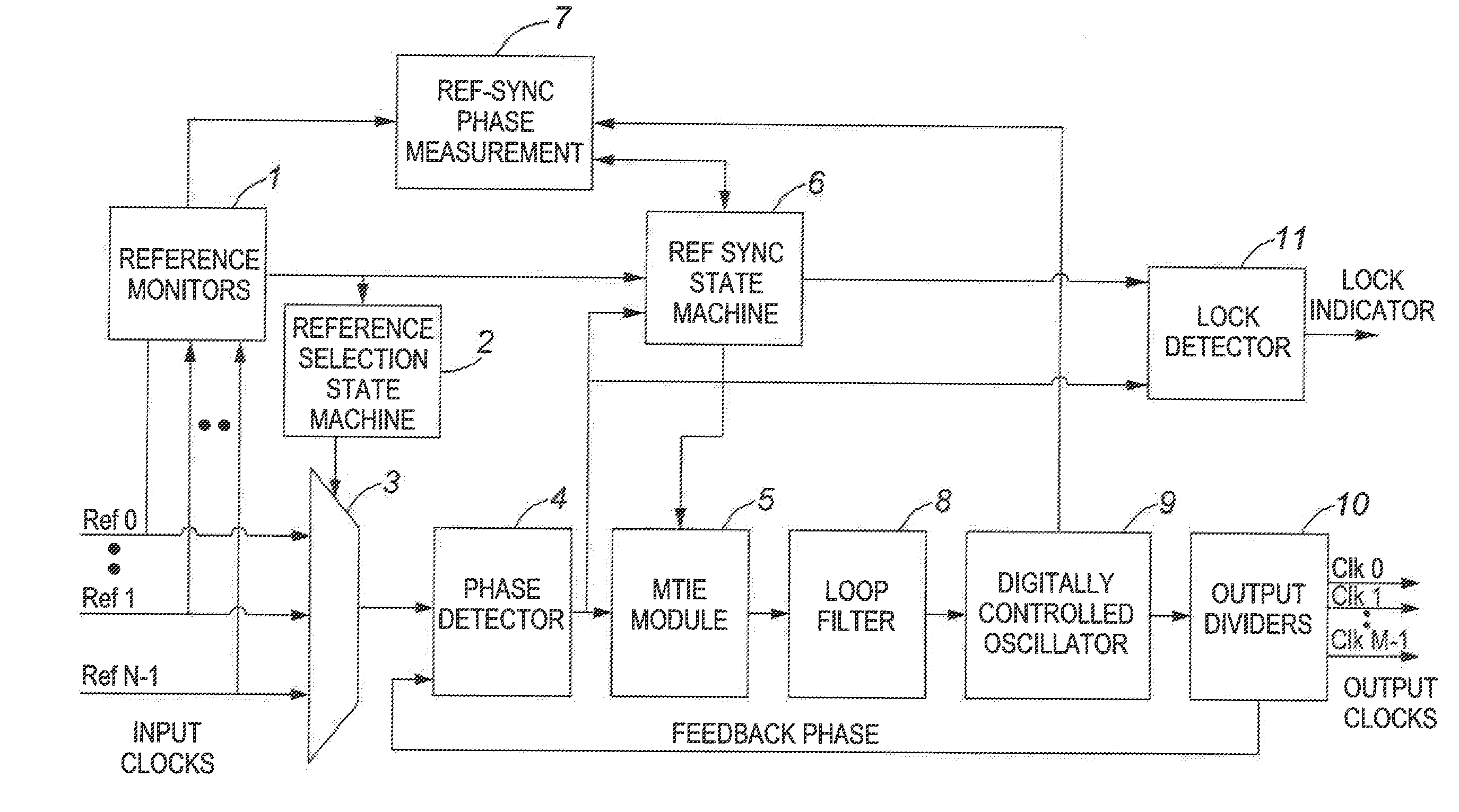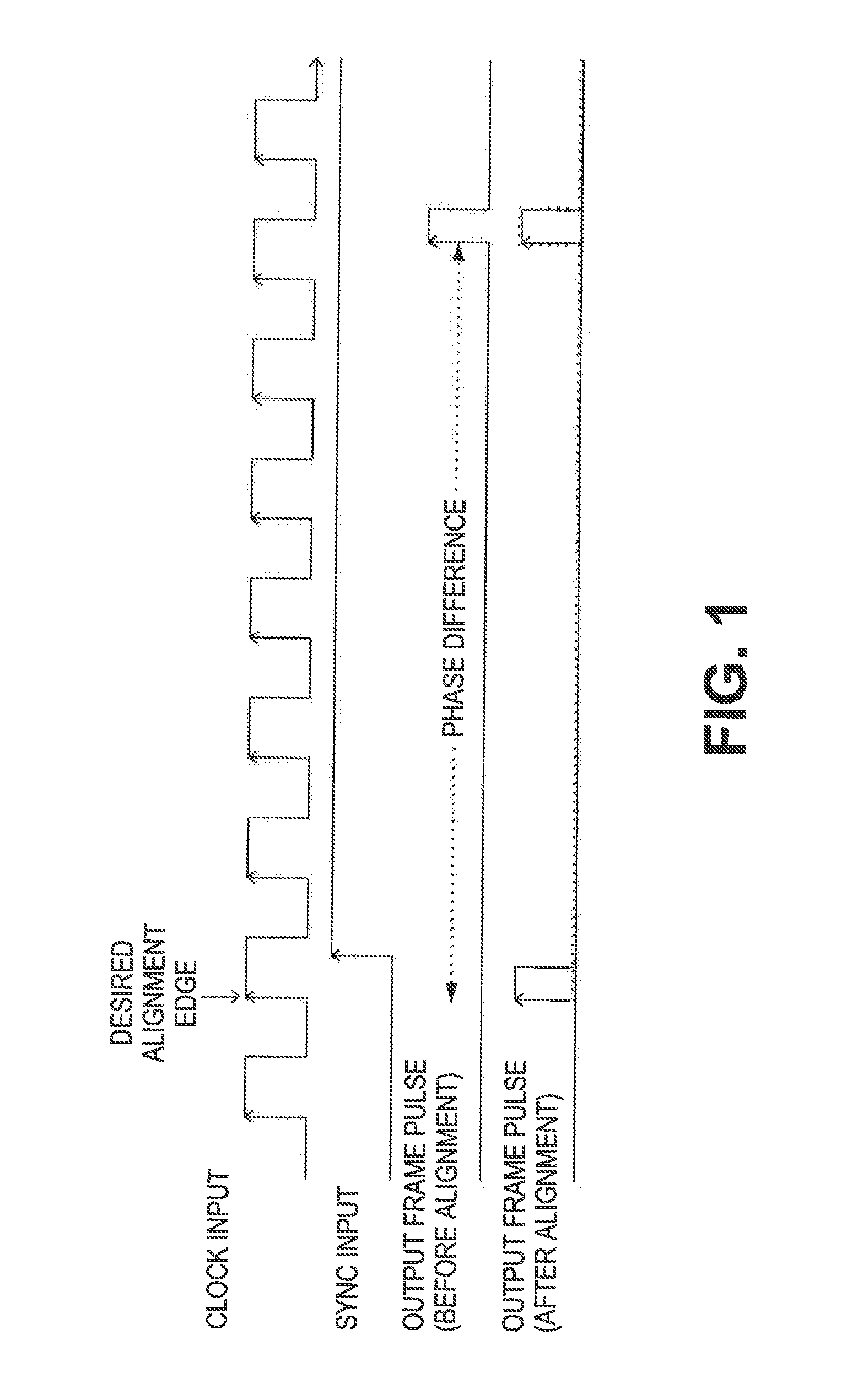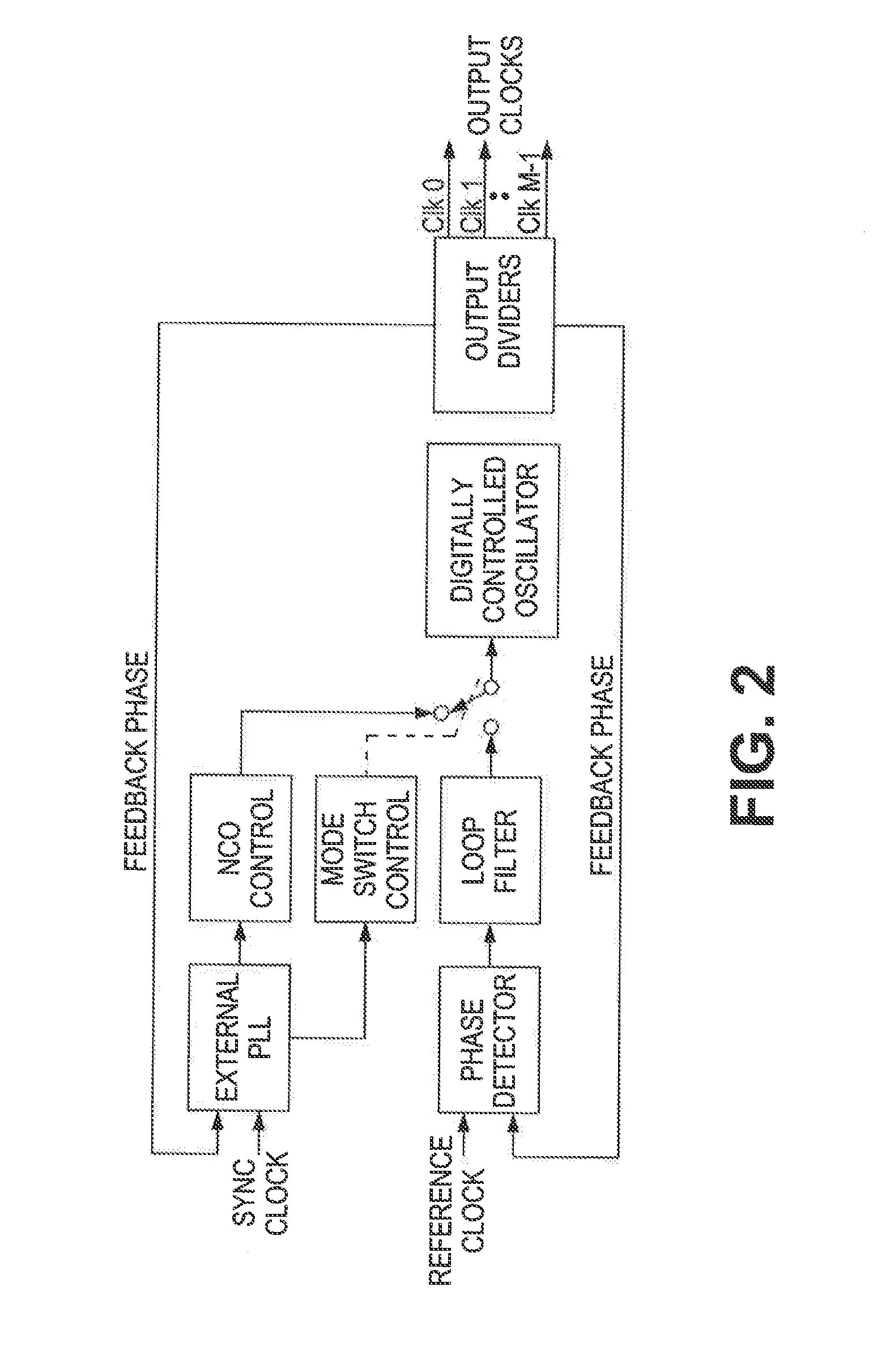Phase locked loop with simultaneous locking to low and high frequency clocks
a phase lock and high-frequency clock technology, applied in the direction of pulse automatic control, electric devices, etc., can solve the problems of low bandwidth, unacceptably long time to align with the phase of the low-frequency clock, high implementation cost,
- Summary
- Abstract
- Description
- Claims
- Application Information
AI Technical Summary
Benefits of technology
Problems solved by technology
Method used
Image
Examples
Embodiment Construction
[0030]Reference will now be made to FIG. 5, which shows a high level block diagram of a PLL circuit according to an embodiment of the invention.
[0031]Reference monitor module 1 determines the existence, the short-term and the long-term quality of the input reference clocks, based on specified criteria, and notifies the reference selection state machine module 2 about the clocks' reliability. Hysteresis functionality is implemented in the reference monitor module 1 such that bouncing between references is prevented when the frequency offset of the preferred input reference clock is close to the reliability boundary.
[0032]The reference selection state machine module 2 controls the input reference multiplexer 3, which selects appropriate reference inputs. The reference inputs may be high or low frequency, but preferably there should be at least one high-frequency reference and at least one low-frequency reference available at the input to reference multiplexer 3. The multiplexer 3 can ...
PUM
 Login to View More
Login to View More Abstract
Description
Claims
Application Information
 Login to View More
Login to View More - R&D
- Intellectual Property
- Life Sciences
- Materials
- Tech Scout
- Unparalleled Data Quality
- Higher Quality Content
- 60% Fewer Hallucinations
Browse by: Latest US Patents, China's latest patents, Technical Efficacy Thesaurus, Application Domain, Technology Topic, Popular Technical Reports.
© 2025 PatSnap. All rights reserved.Legal|Privacy policy|Modern Slavery Act Transparency Statement|Sitemap|About US| Contact US: help@patsnap.com



